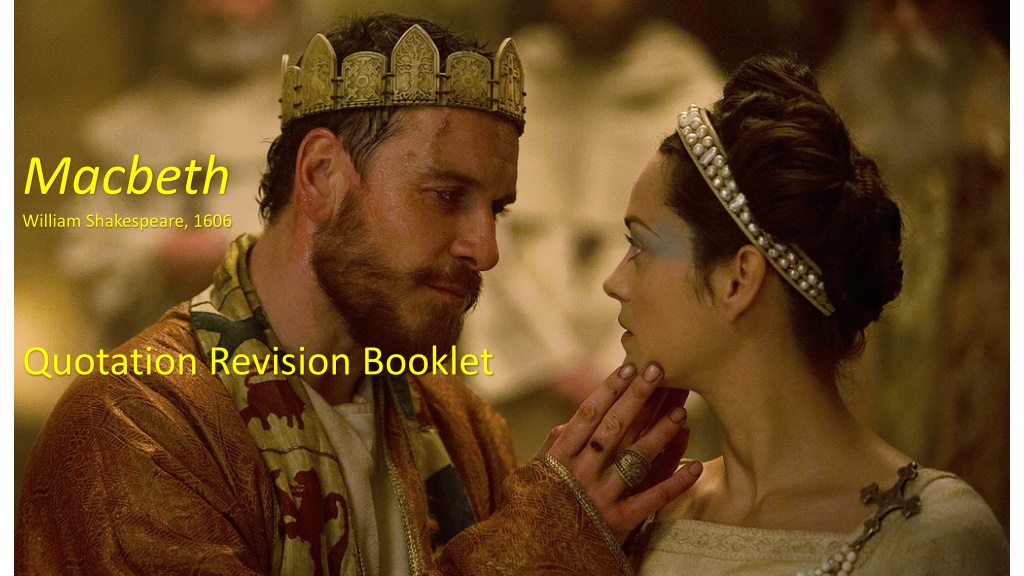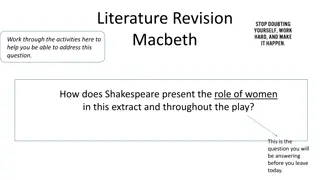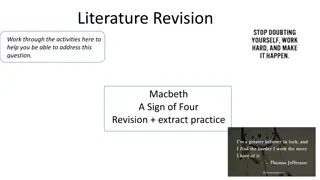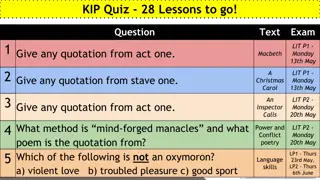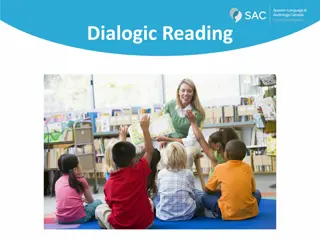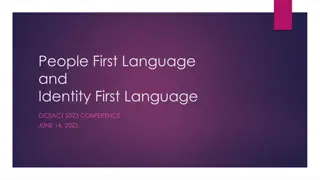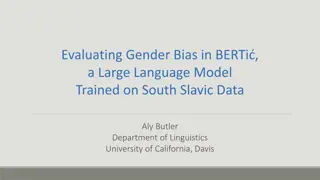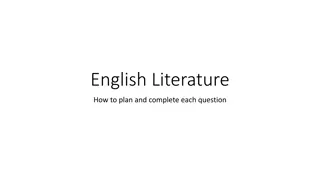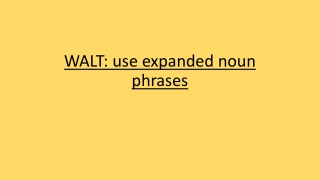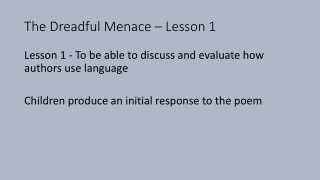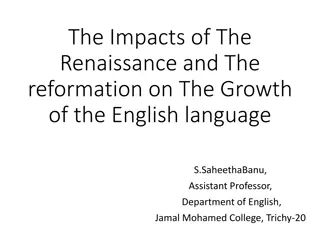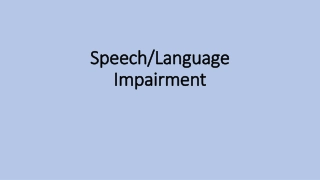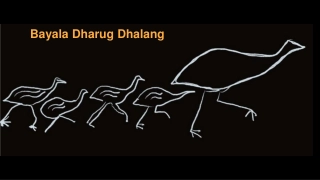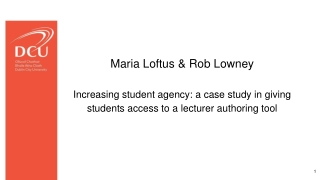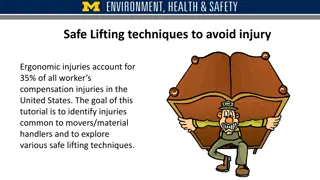Insights into Shakespeare's "Macbeth" and Language Techniques
Explore key themes, characters, language techniques, and historical context in William Shakespeare's "Macbeth." Dive into the tragic hero Macbeth's evolution from protagonist to antagonist, Lady Macbeth's manipulative nature, and the supernatural elements portrayed by the witches. Understand the significance of gender roles, superstition, and religious beliefs in the 11th-century Scottish setting of the play.
Download Presentation
Please find below an Image/Link to download the presentation.
The content on the website is provided AS IS for your information and personal use only. It may not be sold, licensed, or shared on other websites without obtaining consent from the author. Download presentation by click this link. If you encounter any issues during the download, it is possible that the publisher has removed the file from their server.
Presentation Transcript
Macbeth William Shakespeare, 1606 Quotation Revision Booklet
Themes (ideas that recur in a text): Key Characters: Macbeth Death Lady Macbeth Ambition King Duncan Masculinity Malcolm son of Duncan Kingship vs Tyranny Macduff Supernatural Banquo Children Fleance Banquo s son Guilt The Witches Madness Hecate leader of the witches
Language Techniques: Word Classes Nouns Labelling or denoting words e.g. table, Paris, apple. Adjectives Describe nouns e.g. big, square, grey. Verbs Action/doing words e.g. run, jump, singing. Adverbs Describe verbs e.g. quickly, agonisingly, decisively. Pronouns A word used instead of a noun e.g. he, she, we. Simile (comparison with like or as) e.g. life is like a journey. Metaphors (saying something is something else) e.g. life is a journey. Pathetic fallacy when the weather/setting matches the mood. Onomatopoeia (bang, crash, creak) words which sound like what they describe. Juxtaposition two opposites next to each other e.g. light at the end of the tunnel. Hyperbole (exaggeration) - e.g. I cried a thousand tears. Oxymoron two opposites which can t physically exist e.g. deafening silence. Alliteration words with the same letter or sound used consecutively e.g. green grass. Tricolon/Triple three words or ideas used for emphasis e.g.the good, the bad and the ugly. Personification giving human qualities to something non-human e.g. the tree waved as we passed. Sibilance( S alliteration) e.g. several sensible stacks of snakes. Connotation thoughts/feelings associated with a word e.g. red could connote anger, passion, love or blood, etc. Rhetorical Questions questions that don t need an answer e.g. who do you think you are? Listing writing several words or connected items consecutively. Euphemism A milder way of referring to a sensitive topic. Tautology Saying the same thing twice or more using different words. Sentences Types Exclamative Exclaiming or shouting e.g. he ran really fast! Declarative Making a statement e.g. it was raining. Imperative A command e.g. you must open the door. Interrogative Asks a question e.g. who are you? Soliloquy When a character speaks their thoughts alone on stage. Anagnorisis A character s sudden realisation of their situation. Peripeteia A turning point or reversal of fortune. Hermatia A character s fatal flaw. Eponymous When a text is named after the main character.
Macbeth set in the 11th Century 1,000-1,100, Scotland. Tragedy meaning the main characters die in the end. Macbeth is a tragic hero (fatal flaw or hamartia) ambition Gender roles at the time; men were expected to be bread-winners , powerful, not expressing emotion, violent Women were expected to care for the house/children childbirth seen as a miracle at the time Superstitious/religious society at the time focus on God and the supernatural Anagnorisis character's sudden realisation of their situation. Macbeth experiences this when fighting Macduff Macbeth at the beginning, he is the Thane of Glammis and fighting for the King, therefore he is presented in a positive light at this point, he is following the status quo and the audience is expected to like him (protagonist). As the play progresses, Macbeth begins to become more and more selfish, power-hungry and greedy when he murders the King he becomes the play s antagonist. As events unfold, his mental state deteriorates as he becomes more paranoid. Lady Macbeth initially just as power-hungry, if not more so, than her husband. She is manipulative and strong-willed, as they begin to take over she controls Macbeth. She asks spirits to unsex her, making her lose her feminine traits and become more masculine. Towards the end of the play, she can t live with the guilt and commits suicide. Witches supernatural beings who were believed to have real powers (foresight, flying, invisibility, crashing ships). Manipulate Macbeth. Banquo sceptical of the witches and worried about them. He s an example to the audience of how they should be a model character. Murdered by Macbeth s murderers, however his son (Fleance pun on fleeing) escapes. Banquo was believed to be a real man and descendant of King James Banquo s bloodline prophesised to be Kings. Juxtaposes Macbeth s actions; he makes the right decisions in the eyes of society (resists temptation). Macduff Protagonist. Foil character who juxtaposes Macbeth; he has morals and a conscience, when he acquires the crown at the end of the play, he passes it back to Malcom, reinstating the status quo (putting things back to normal). Loyal to the King/royal bloodline. Untimely ripped from his mother s womb not born of a woman able to kill Macbeth. Macbeth 1606 - Context Shakespeare 1564-1616 Jacobean era (King James 1st of England, 6th of Scotland). The play was written to impress the king Reference to the gunpowder plot (James escaped this). This was an attempt at regicide/treason (killing the King) James was fascinated by Witches wrote a book titled Daemonologie A play where those who stick to the status quo (natural order of things) prosper Divine Right of Kings the idea that God selected the King. Believed the king had healing powers. Macbeth disrupts the status quo, therefore leading to his demise Great Chain of Being the belief that there is a universal hierarchy, with God at the top, then angels/celestial beings, then the king, then the aristocracy, then the peasants, then the animals, then the plants, then the rocks etc
Section A (AO2) Analysis of Language What is hurly-burly ? Define this and annotate with at least 2 connotations. When the hurly-burlys done; when the battles lost, and won What word class is battle ? Annotate this with at least 2 connotations. Why might it be significant that these lines rhyme? Section B (AO1) Use and Interpretation of Quotes Who, or what, is the quotation about? Who says it? Section B (AO1/AO3) Link to Themes/Context Link this quote to 3 themes and explain how for each one: What does the quotation suggest? What tone is established through the quote? Link this quote to at least 1 contextual idea: Is there any relevance in where the quote is in the text?
Section A (AO2) Analysis of Language Research the definition of antimetabole. What is it? How is it being used here? Fair is foul and foul is fair; hover through the fog and filthy air What word class is hover ? What does it suggest about the speaker? What are the connotations of filthy ? Annotate this with at least 2 connotations. Section B (AO1) Use and Interpretation of Quotes Who, or what, is the quotation about? Who says it? Section B (AO1/AO3) Link to Themes/Context Link this quote to 3 themes and explain how for each one: What does the quotation suggest? What tone is established through the quote? Link this quote to at least 1 contextual idea: Is there any relevance in where the quote is in the text?
Section A (AO2) Analysis of Language What are the connotations of foul ? Annotate this with at least 2 connotations. So foul and fair a day I have not seen What are the connotations of fair ? Annotate this with at least 2 connotations. Research antithesis. What is it? How is it being used here? Section B (AO1) Use and Interpretation of Quotes Who, or what, is the quotation about? Who says it? Section B (AO1/AO3) Link to Themes/Context Link this quote to 3 themes and explain how for each one: What does the quotation suggest? What tone is established through the quote? Link this quote to at least 1 contextual idea: Is there any relevance in where the quote is in the text?
Section A (AO2) Analysis of Language What word class is noble ? Annotate this with at least 2 connotations. What he hath lost, noble Macbeth hath won What technique is used to show opposites in lost and won ? What do you associate with each word? Section B (AO1) Use and Interpretation of Quotes Who, or what, is the quotation about? Who says it? Section B (AO1/AO3) Link to Themes/Context Link this quote to 3 themes and explain how for each one: What does the quotation suggest? What tone is established through the quote? Link this quote to at least 1 contextual idea: Is there any relevance in where the quote is in the text?
Section A (AO2) Analysis of Language Is the steel literally smoking? What technique is being used and why can this be? Brandished steel which smoked with bloody execution Highlight the verbs in this quote and annotate them with at least 2 connotations. Highlight the nouns in this quote and annotate them with at least 2 connotations. What word class is bloody ? Annotate this with at least 2 connotations. Section B (AO1) Use and Interpretation of Quotes Who, or what, is the quotation about? Who says it? Section B (AO1/AO3) Link to Themes/Context Link this quote to 3 themes and explain how for each one: What does the quotation suggest? What tone is established through the quote? Link this quote to at least 1 contextual idea: Is there any relevance in where the quote is in the text?
Section A (AO2) Analysis of Language What are stars associated with? Why can it be significant that this character wants to hide their black desires from them? Stars, hide your fires; let light not see my black and deep desires What technique is being used when this character tells the starts to hide [their] fires ? What word class is deep and black ? Annotate each one with at least 2 connotations. Where is there juxtaposition in this quotation? Highlight this and explain why it has been used. Section B (AO1) Use and Interpretation of Quotes Who, or what, is the quotation about? Who says it? Section B (AO1/AO3) Link to Themes/Context Link this quote to 3 themes and explain how for each one: What does the quotation suggest? What tone is established through the quote? Link this quote to at least 1 contextual idea: Is there any relevance in where the quote is in the text?
Section A (AO2) Analysis of Language What word class is unseamed ? What sort of imagery does this create and why is it an effective word to use? Unseamed him from the knave to th chaps Unseamed can also link to clothing. What can this interpretation suggest about the person doing this? What is a knave and what are chaps ? Research and define these, and then explain why this is a graphic image. Section B (AO1) Use and Interpretation of Quotes Who, or what, is the quotation about? Who says it? Section B (AO1/AO3) Link to Themes/Context Link this quote to 3 themes and explain how for each one: What does the quotation suggest? What tone is established through the quote? Link this quote to at least 1 contextual idea: Is there any relevance in where the quote is in the text?
Section A (AO2) Analysis of Language What does it mean if something is false ? What word class is this and why do you think it has been repeated? Annotate this with at least 2 connotations. False face must hide what false heart doth know What word class is face and heart ? Annotate each with at least 2 connotations. Why can these body parts be significant? Section B (AO1) Use and Interpretation of Quotes Who, or what, is the quotation about? Who says it? Section B (AO1/AO3) Link to Themes/Context Link this quote to 3 themes and explain how for each one: What does the quotation suggest? What tone is established through the quote? Link this quote to at least 1 contextual idea: Is there any relevance in where the quote is in the text?
Section A (AO2) Analysis of Language What technique is being used to describe this character s personality? What are the connotations of milk ? Aim for at least 2 ideas. Why can these ideas be relevant? I fear thy nature I too full o th milkof human kindness Highlight the nouns in this quote and annotate each one with at least 2 connotations. Section B (AO1) Use and Interpretation of Quotes Who, or what, is the quotation about? Who says it? Section B (AO1/AO3) Link to Themes/Context Link this quote to 3 themes and explain how for each one: What does the quotation suggest? What tone is established through the quote? Link this quote to at least 1 contextual idea: Is there any relevance in where the quote is in the text?
Section A (AO2) Analysis of Language What class of word is cruelty ? What are the connotations of this? Aim for at least 2 ideas. Unsex me here and fill me from the crown to the toe, top-full of direst cruelty What does it mean to be unsexed? Why could this be relevant? What word class is direst ? Define this term. Section B (AO1) Use and Interpretation of Quotes Who, or what, is the quotation about? Who says it? Section B (AO1/AO3) Link to Themes/Context Link this quote to 3 themes and explain how for each one: What does the quotation suggest? What tone is established through the quote? Link this quote to at least 1 contextual idea: Is there any relevance in where the quote is in the text?
Section A (AO2) Analysis of Language What sentence type is being used? Why can this be important? Are you not a man? What are the connotations of a man ? What is the character implying here? Section B (AO1) Use and Interpretation of Quotes Who, or what, is the quotation about? Who says it? Section B (AO1/AO3) Link to Themes/Context Link this quote to 3 themes and explain how for each one: What does the quotation suggest? What tone is established through the quote? Link this quote to at least 1 contextual idea: Is there any relevance in where the quote is in the text?
Section A (AO2) Analysis of Language Highlight the adjectives in this quote. What are the connotations of fair , noble and hostess ? Annotate the quote with these. Fair and noble hostess Section B (AO1) Use and Interpretation of Quotes Who, or what, is the quotation about? Who says it? Section B (AO1/AO3) Link to Themes/Context Link this quote to 3 themes and explain how for each one: What does the quotation suggest? What tone is established through the quote? Link this quote to at least 1 contextual idea: Is there any relevance in where the quote is in the text?
Section A (AO2) Analysis of Language How is juxtaposition being used in this quote? Look like th innocent flower, but be the serpent under t Why is this an effective metaphor? What are the connotations of innocent , flower and serpent ? Annotate the quote with these. Section B (AO1) Use and Interpretation of Quotes Who, or what, is the quotation about? Who says it? Section B (AO1/AO3) Link to Themes/Context Link this quote to 3 themes and explain how for each one: What does the quotation suggest? What tone is established through the quote? Link this quote to at least 1 contextual idea: Is there any relevance in where the quote is in the text?
Section A (AO2) Analysis of Language How is juxtaposition being used in this quote? What is gall ? Define this. Take my milk for gall Annotate milk and gall with at least 2 connotations each. Section B (AO1) Use and Interpretation of Quotes Who, or what, is the quotation about? Who says it? Section B (AO1/AO3) Link to Themes/Context Link this quote to 3 themes and explain how for each one: What does the quotation suggest? What tone is established through the quote? Link this quote to at least 1 contextual idea: Is there any relevance in where the quote is in the text?
Section A (AO2) Analysis of Language Highlight the verbs in this quote. How do they juxtapose each other? Annotate these with their connotations. Plucked my nipple from his boneless gums and dashed the brains out Why is it relevant that the gums are boneless ? What does this suggest? What sort of imagery is created through brains ? Section B (AO1) Use and Interpretation of Quotes Who, or what, is the quotation about? Who says it? Section B (AO1/AO3) Link to Themes/Context Link this quote to 3 themes and explain how for each one: What does the quotation suggest? What tone is established through the quote? Link this quote to at least 1 contextual idea: Is there any relevance in where the quote is in the text?
Section A (AO2) Analysis of Language Identify the metaphor in this quote and explain what it means. I have no spur to prick the sides of my intent, but only vaulting ambition, which o erleaps itself and falls on the other What does vaulting mean? What word class is this? Annotate this word with at least 2 ideas. Define the term spur . Section B (AO1) Use and Interpretation of Quotes Who, or what, is the quotation about? Who says it? Section B (AO1/AO3) Link to Themes/Context Link this quote to 3 themes and explain how for each one: What does the quotation suggest? What tone is established through the quote? Link this quote to at least 1 contextual idea: Is there any relevance in where the quote is in the text?
Section A (AO2) Analysis of Language What comparative technique is being used in this quote? Why is this effective? Like Valour s minion carv d out his passage Why might Valour have been personified? What does this word mean? Annotate it with at least 2 connotations. What word class is carv d ? Annotate this with at least 2 connotations. Section B (AO1) Use and Interpretation of Quotes Who, or what, is the quotation about? Who says it? Section B (AO1/AO3) Link to Themes/Context Link this quote to 3 themes and explain how for each one: What does the quotation suggest? What tone is established through the quote? Link this quote to at least 1 contextual idea: Is there any relevance in where the quote is in the text?
Section A (AO2) Analysis of Language Explain how this quote can be interpreted in at least 2 ways. What word class is clears ? What does this imply? A little water clears us of this deed What is the deed ? How is this euphemistic? Section B (AO1) Use and Interpretation of Quotes Who, or what, is the quotation about? Who says it? Section B (AO1/AO3) Link to Themes/Context Link this quote to 3 themes and explain how for each one: What does the quotation suggest? What tone is established through the quote? Link this quote to at least 1 contextual idea: Is there any relevance in where the quote is in the text?
Section A (AO2) Analysis of Language What sentence type is this? Why is it relevant and what does it suggest about the character who says this? Is this a dagger I see before me? What is a dagger ? Annotate this with at least 2 connotations. Section B (AO1) Use and Interpretation of Quotes Who, or what, is the quotation about? Who says it? Section B (AO1/AO3) Link to Themes/Context Link this quote to 3 themes and explain how for each one: What does the quotation suggest? What tone is established through the quote? Link this quote to at least 1 contextual idea: Is there any relevance in where the quote is in the text?
Section A (AO2) Analysis of Language What word class is false ? What does it suggest about the dagger the character is looking at? A dagger of the mind, a false creation How else can the phrase a dagger of the mind be interpreted? Section B (AO1) Use and Interpretation of Quotes Who, or what, is the quotation about? Who says it? Section B (AO1/AO3) Link to Themes/Context Link this quote to 3 themes and explain how for each one: What does the quotation suggest? What tone is established through the quote? Link this quote to at least 1 contextual idea: Is there any relevance in where the quote is in the text?
Section A (AO2) Analysis of Language What exaggerative technique is being used here? What effect does this have? Will all great Neptune s ocean wash this blood clean from my hand? What type of sentence is this and why can it be relevant? Who is Neptune and why have they been referred to? Annotate the following words with at least 2 connotations: blood , clean , wash . Section B (AO1) Use and Interpretation of Quotes Who, or what, is the quotation about? Who says it? Section B (AO1/AO3) Link to Themes/Context Link this quote to 3 themes and explain how for each one: What does the quotation suggest? What tone is established through the quote? Link this quote to at least 1 contextual idea: Is there any relevance in where the quote is in the text?
Section A (AO2) Analysis of Language Define the following terms: dudgeon , gouts . Whose blood is on the blade? Is there more than one interpretation to this? On thy blade and dudgeon, gouts of blood What word class is gouts ? Annotate this with at least 2 connotations. Section B (AO1) Use and Interpretation of Quotes Who, or what, is the quotation about? Who says it? Section B (AO1/AO3) Link to Themes/Context Link this quote to 3 themes and explain how for each one: What does the quotation suggest? What tone is established through the quote? Link this quote to at least 1 contextual idea: Is there any relevance in where the quote is in the text?
Section A (AO2) Analysis of Language What word class is murder ? Annotate this with at least 2 connotations. What technique is being used here to describe sleep and what does it suggest? Sleep no more; Macbeth does murder sleep! Why do you think that sleep has been repeated? What sentence type is being used? Why can this, and the fact that it is split with a semi-colon, be significant? Section B (AO1) Use and Interpretation of Quotes Who, or what, is the quotation about? Who says it? Section B (AO1/AO3) Link to Themes/Context Link this quote to 3 themes and explain how for each one: What does the quotation suggest? What tone is established through the quote? Link this quote to at least 1 contextual idea: Is there any relevance in where the quote is in the text?
Section A (AO2) Analysis of Language What technique is being used when this character says they wear a heart so white ? My hands are of your colour, but I shame to wear a heart so white How has colour symbolism been used in this quote? Annotate the following words with at least 2 connotations: heart , white . Section B (AO1) Use and Interpretation of Quotes Who, or what, is the quotation about? Who says it? Section B (AO1/AO3) Link to Themes/Context Link this quote to 3 themes and explain how for each one: What does the quotation suggest? What tone is established through the quote? Link this quote to at least 1 contextual idea: Is there any relevance in where the quote is in the text?
Section A (AO2) Analysis of Language What is a knell and why is this significant? Hear it not, Duncan, for it is a knell which summons thee to Heaven, or to Hell How is juxtaposition being used in this quote? Highlight each word and annotate it with at least 2 connotations. Why do you think a rhyming couplet has been used in this quote? Section B (AO1) Use and Interpretation of Quotes Who, or what, is the quotation about? Who says it? Section B (AO1/AO3) Link to Themes/Context Link this quote to 3 themes and explain how for each one: What does the quotation suggest? What tone is established through the quote? Link this quote to at least 1 contextual idea: Is there any relevance in where the quote is in the text?
Section A (AO2) Analysis of Language What sentence type is being used in the quote? Why do you think this has been used? Wake Duncan with thy knocking! I would thou couldst! How can the knocking be interpreted in more than one way? How is wake euphemistic? What does the fact this character would wake Duncan if they could suggest about them? Section B (AO1) Use and Interpretation of Quotes Who, or what, is the quotation about? Who says it? Section B (AO1/AO3) Link to Themes/Context Link this quote to 3 themes and explain how for each one: What does the quotation suggest? What tone is established through the quote? Link this quote to at least 1 contextual idea: Is there any relevance in where the quote is in the text?
Section A (AO2) Analysis of Language What technique is being used in this quote and why is it effective? Where we are there s daggers in men s smiles How do the connotations of daggers and smiles juxtapose each other? What is being suggested about the situation of the character who says this quote? Section B (AO1) Use and Interpretation of Quotes Who, or what, is the quotation about? Who says it? Section B (AO1/AO3) Link to Themes/Context Link this quote to 3 themes and explain how for each one: What does the quotation suggest? What tone is established through the quote? Link this quote to at least 1 contextual idea: Is there any relevance in where the quote is in the text?
Section A (AO2) Analysis of Language What word class is afraid ? Annotate this with at least 2 connotations. What word class is dare ? Annotate this with at least 2 connotations. I am afraid to think what I have done. Look on tagain, I dare not What does this quote imply about how the character who speaks it is feeling? Section B (AO1) Use and Interpretation of Quotes Who, or what, is the quotation about? Who says it? Section B (AO1/AO3) Link to Themes/Context Link this quote to 3 themes and explain how for each one: What does the quotation suggest? What tone is established through the quote? Link this quote to at least 1 contextual idea: Is there any relevance in where the quote is in the text?
Section A (AO2) Analysis of Language What technique is being used in this quote? What does it mean? O, Full of scorpions is my mind What is a scorpion ? What are the connotations of this word? What does this suggest about the character who says it? Section B (AO1) Use and Interpretation of Quotes Who, or what, is the quotation about? Who says it? Section B (AO1/AO3) Link to Themes/Context Link this quote to 3 themes and explain how for each one: What does the quotation suggest? What tone is established through the quote? Link this quote to at least 1 contextual idea: Is there any relevance in where the quote is in the text?
Section A (AO2) Analysis of Language How many ideas are mentioned in the first part of this quote? What technique is this? Whole as the marble, founded as the rock, broad as the casing air but now I am cabined, cribbed confined What comparative technique is being used? Why is this effective? What sort of sound is being produced in the latter part of the quote? What technique is being used and why can this be significant? Annotate the following with at least 2 connotations: marble , rock , cabined , cribbed , confined . Section B (AO1) Use and Interpretation of Quotes Who, or what, is the quotation about? Who says it? Section B (AO1/AO3) Link to Themes/Context Link this quote to 3 themes and explain how for each one: What does the quotation suggest? What tone is established through the quote? Link this quote to at least 1 contextual idea: Is there any relevance in where the quote is in the text?
Section A (AO2) Analysis of Language What technique is being used here to describe the character s legacy? Mine eternal jewel given to the common enemy of man What word class is eternal ? Annotate this with at least 2 connotations. What word class is jewel ? Annotate this with at least 2 connotations. Section B (AO1) Use and Interpretation of Quotes Who, or what, is the quotation about? Who says it? Section B (AO1/AO3) Link to Themes/Context Link this quote to 3 themes and explain how for each one: What does the quotation suggest? What tone is established through the quote? Link this quote to at least 1 contextual idea: Is there any relevance in where the quote is in the text?
Section A (AO2) Analysis of Language Explain the metaphor in this quote. What word class is scorched ? Annotate this with at least 2 connotations. What word class is snake ? Annotate this with at least 2 connotations. We have scorched the snake, not killed it Why do you think sibilance has been used in this quote? Section B (AO1) Use and Interpretation of Quotes Who, or what, is the quotation about? Who says it? Section B (AO1/AO3) Link to Themes/Context Link this quote to 3 themes and explain how for each one: What does the quotation suggest? What tone is established through the quote? Link this quote to at least 1 contextual idea: Is there any relevance in where the quote is in the text?
Section A (AO2) Analysis of Language How can this phrase be interpreted in more than one way? What are the connotations of blood ? Blood will have blood What does this quote suggest about what will happen later in the play? Section B (AO1) Use and Interpretation of Quotes Who, or what, is the quotation about? Who says it? Section B (AO1/AO3) Link to Themes/Context Link this quote to 3 themes and explain how for each one: What does the quotation suggest? What tone is established through the quote? Link this quote to at least 1 contextual idea: Is there any relevance in where the quote is in the text?
Section A (AO2) Analysis of Language Explain which characters the following metaphors represent: serpent , worm . There the grown serpent lies: the worm, that s fled. What word class is fled ? Annotate this with at least 2 connotations. What sentence type is this? Why do you think it has been split into two parts with a colon? Section B (AO1) Use and Interpretation of Quotes Who, or what, is the quotation about? Who says it? Section B (AO1/AO3) Link to Themes/Context Link this quote to 3 themes and explain how for each one: What does the quotation suggest? What tone is established through the quote? Link this quote to at least 1 contextual idea: Is there any relevance in where the quote is in the text?
Section A (AO2) Analysis of Language Highlight the adjectives in the quote. Annotate these with at least 2 connotations. Thy bones are marrowless, thy blood is cold How can this quote be interpreted as accusatory? Section B (AO1) Use and Interpretation of Quotes Who, or what, is the quotation about? Who says it? Section B (AO1/AO3) Link to Themes/Context Link this quote to 3 themes and explain how for each one: What does the quotation suggest? What tone is established through the quote? Link this quote to at least 1 contextual idea: Is there any relevance in where the quote is in the text?
Section A (AO2) Analysis of Language What does it mean to lack something? How else can sleep be interpreted in this quotation? You lack the season of all natures, sleep Why can it be relevant that the character is going against nature ? Section B (AO1) Use and Interpretation of Quotes Who, or what, is the quotation about? Who says it? Section B (AO1/AO3) Link to Themes/Context Link this quote to 3 themes and explain how for each one: What does the quotation suggest? What tone is established through the quote? Link this quote to at least 1 contextual idea: Is there any relevance in where the quote is in the text?
Section A (AO2) Analysis of Language Annotate the following words with at least 2 connotations: Heaven , flight . Banquo, thy soul s flight, if it find Heaven, must find it tonight What is this quote a reference to what has happened to Banquo? Why is it significant about Banquo going to Heaven in comparison to Macbeth? Section B (AO1) Use and Interpretation of Quotes Who, or what, is the quotation about? Who says it? Section B (AO1/AO3) Link to Themes/Context Link this quote to 3 themes and explain how for each one: What does the quotation suggest? What tone is established through the quote? Link this quote to at least 1 contextual idea: Is there any relevance in where the quote is in the text?
Section A (AO2) Analysis of Language Highlight the adjectives in this quote. Annotate each one with at least 2 connotations. Be bright and jovial among your guests tonight Why is it important for this character to behave this way in front of their guests ? Section B (AO1) Use and Interpretation of Quotes Who, or what, is the quotation about? Who says it? Section B (AO1/AO3) Link to Themes/Context Link this quote to 3 themes and explain how for each one: What does the quotation suggest? What tone is established through the quote? Link this quote to at least 1 contextual idea: Is there any relevance in where the quote is in the text?
Section A (AO2) Analysis of Language What is treachery ? Define this, and annotate it with at least 2 connotations. O, treachery! Fly, good Fleance, fly! What sentence type has been used and why do think this is? Why has fly been repeated? What word class is this? Section B (AO1) Use and Interpretation of Quotes Who, or what, is the quotation about? Who says it? Section B (AO1/AO3) Link to Themes/Context Link this quote to 3 themes and explain how for each one: What does the quotation suggest? What tone is established through the quote? Link this quote to at least 1 contextual idea: Is there any relevance in where the quote is in the text?
Section A (AO2) Analysis of Language What word class is gory ? Annotate this with at least 2 connotations. What imagery does this create? Thou canst not say I did it: never shake thy gory locks at me Why do you think that this quote has been split into two parts with a colon? What can it imply? Why can it be relevant that this sounds like a confession? Section B (AO1) Use and Interpretation of Quotes Who, or what, is the quotation about? Who says it? Section B (AO1/AO3) Link to Themes/Context Link this quote to 3 themes and explain how for each one: What does the quotation suggest? What tone is established through the quote? Link this quote to at least 1 contextual idea: Is there any relevance in where the quote is in the text?
Section A (AO2) Analysis of Language What type of creatures of being named in this quote and why is this important? The Russian bear, the armed rhinoceros, the Hyrcan tiger, take any shape but that What technique has been used to name these animals? Why? What does it imply about what is in front of this character if they fear these animals less than this? Section B (AO1) Use and Interpretation of Quotes Who, or what, is the quotation about? Who says it? Section B (AO1/AO3) Link to Themes/Context Link this quote to 3 themes and explain how for each one: What does the quotation suggest? What tone is established through the quote? Link this quote to at least 1 contextual idea: Is there any relevance in where the quote is in the text?
Section A (AO2) Analysis of Language What word class is babes ? Why has this term been used? Annotate this with at least 2 connotations. Your wife and babes savagely slaughtered What word class is savagely ? Why has this term been used? Annotate this with at least 2 connotations. What word class is slaughtered ? Why has this term been used? Annotate this with at least 2 connotations. Section B (AO1) Use and Interpretation of Quotes Who, or what, is the quotation about? Who says it? Section B (AO1/AO3) Link to Themes/Context Link this quote to 3 themes and explain how for each one: What does the quotation suggest? What tone is established through the quote? Link this quote to at least 1 contextual idea: Is there any relevance in where the quote is in the text?
